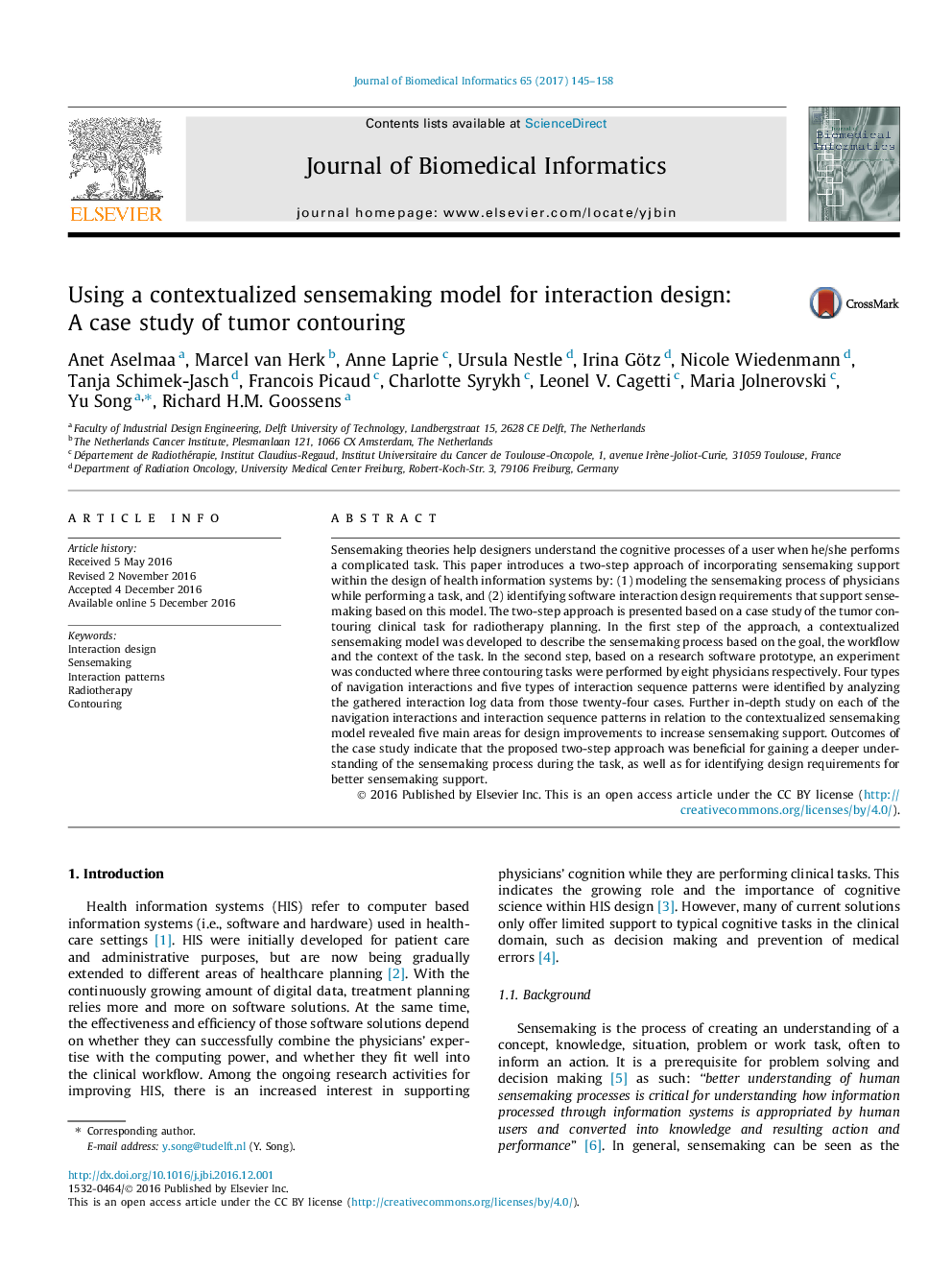| کد مقاله | کد نشریه | سال انتشار | مقاله انگلیسی | نسخه تمام متن |
|---|---|---|---|---|
| 4966921 | 1449304 | 2017 | 14 صفحه PDF | دانلود رایگان |
- We propose a two-step approach for incorporating sensemaking theory into HIS design.
- A contextual sensemaking (C-SM) model describing the tumor contouring was developed.
- Sensemaking and design insights regarding the tumor contouring task were generated.
- Five areas of improvements for increasing sensemaking support were identified.
Sensemaking theories help designers understand the cognitive processes of a user when he/she performs a complicated task. This paper introduces a two-step approach of incorporating sensemaking support within the design of health information systems by: (1) modeling the sensemaking process of physicians while performing a task, and (2) identifying software interaction design requirements that support sensemaking based on this model. The two-step approach is presented based on a case study of the tumor contouring clinical task for radiotherapy planning. In the first step of the approach, a contextualized sensemaking model was developed to describe the sensemaking process based on the goal, the workflow and the context of the task. In the second step, based on a research software prototype, an experiment was conducted where three contouring tasks were performed by eight physicians respectively. Four types of navigation interactions and five types of interaction sequence patterns were identified by analyzing the gathered interaction log data from those twenty-four cases. Further in-depth study on each of the navigation interactions and interaction sequence patterns in relation to the contextualized sensemaking model revealed five main areas for design improvements to increase sensemaking support. Outcomes of the case study indicate that the proposed two-step approach was beneficial for gaining a deeper understanding of the sensemaking process during the task, as well as for identifying design requirements for better sensemaking support.
205
Journal: Journal of Biomedical Informatics - Volume 65, January 2017, Pages 145-158
